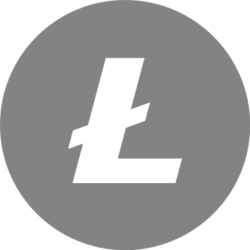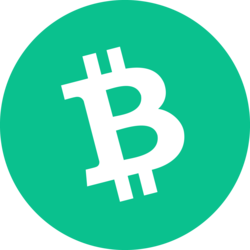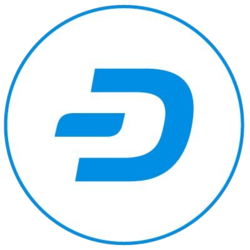The company is getting more money for its disputable blockchain-powered network.
You have to admire P. Durov’s insolence.
During the last few months, the CEO of Telegram persuaded 81 accredited investors, including Silicon Valley giants Sequoia Capital and Benchmark, to give him $850 million in a presale of his company’s cryptocurrency in advance of an ICO. Now he’s trying to gain even more profit from accredited investors before the coin gets offered to the public in a secret second presale.
A few days ago, investors got an email saying that Telegram is doing another private presale, 4 sources with information of the transaction told The Verge.
According to one source, the concrete amount to be raised is still being determined, but 2 other sources claimed Telegram is estimating it will be around the same size as the first round, which would bring the total raised to over $1.6 billion before the ICO even opens up to the general public. Telegram’s proposal was already the biggest ICO ever, dwarfing the previous record of $232 million. Telegram refused to comment on the second presale. Sequoia Capital declined to comment and Benchmark did not reply to questions.
The amendment in Telegram’s plans comes as the company is under research for its proposed Telegram Open Network or TON, which promises to be an Ethereum-like ecosystem with applications, services, and a store for digital and physical products. Critics say the offer is short on technical details, and that Telegram’s high valuation is being driven by hype and speculation rather than the value of the technology.
And how much money is Telegram raising total? Evaluations have varied. The company seemed to revise its aims upward as interest in the offering rised. One cryptocurrency and blockchain investor, Carlos Mosquera of Solidus Capital, said the numbers showed by Telegram kept changing; he was offered different versions of the offer from different intermediaries. Discounts on the presale coins varied from 30 to 80% of the expected public price, in accordance with multiple investors who were pitched on the first presale. “A month and a half ago we got the pitch and the opportunity for Telegram,” Mosquera claimed. “We passed because we received two or three different terms and deals by the same ICO. None of the information was clear.”
Mosquera’s company was not invited to take part in the second presale, but he claimed he isn’t surprised to hear that Telegram is looking for more private investor cash. “Nowadays the presales are hotter than the crowd sale itself,” he stated.
Telegram has reasons to raise more private money if there is enough demand, multiple investors told The Verge. The first presale was rumored to be oversubscribed, and early investors are reportedly flipping their shares and making 2x returns on the secondary market.
According to CNBC report, the SEC has also been increasing its control of ICOs, which means Telegram may not make its public ICO available in the USA. That could be part of the reason why Telegram wants to get more money from accredited investors — meaning companies and individuals with annual profit of $200,000 or a net worth of $1 million — because there are fewer regulatory requirements through that process than through an offering to the general public.
Telegram’s public ICO was expected to occur in March. It’s unknown if the new second private offering affects the timeline for the public sale or how many coins will be available to the public at release.
Telegram’s ICO is one of the most expected the cryptocurrencies world has seen, and it’s the first to attract more traditional Silicon Valley venture capital firms. But watchers are skeptic of its value offering.
According to the 132-page “technical white paper”, telegram’s ICO will fund a suite of blockchain-based goods including file storage, a DNS service, and an ad exchange as part of the TON. Anatomists say the offer makes ambitious demands, such as possibility to process millions of transactions per second, without explaining how.
Catalini, a professor and constitutor of MIT’s Cryptoeconomics Lab, is working on a research of about 1,500 ICOs with his team. “We actually document in our research paper that there has been a major transition from more technical white papers to the kind of white papers that look a lot more like sales pitches,” Catalini told The Verge. “There’s been less focus on technical details over time and, for some of these, much more on selling the vision. In the case of the Telegram one there is a lot that is being promised and not a lot of clarity on how that would be delivered.”
Green, cryptographer and professor at Johns Hopkins University, had a similar reaction to the white paper. “So to their credit, Telegram has shown that it can execute and get software written. That’s actually a big deal when it comes to blockchain projects,” Green said in an email. “That plus millions of dollars means they could pull something off. But I’ll be honest, the white paper reads like someone went out on the internet and harvested the most ambitious ideas from a dozen projects and said ‘let’s do all of those but better!’ It feels unachievable, at least at the scale they’re aiming for now.”
If the Telegram team had included more technical details, not everyone is persuaded it makes sense conceptually. Telegram is efficiently offering to act as a kindly dictator — it will control a majority of its currency, at least to start — helping a system that will eventually be decentralized get off the ground.
“Blockchains are useful when there’s no central authority in command, or when there’s risk that the owner of the platform might fold,” Emin Gün Sirer, a professor at Cornell, expert on distributed systems, and co-director of the Initiative for Cryptocurrencies and Contracts, wrote in an email. “Yet Telegram ICO’s appeal stems from its reach to 200 million users, and its central vision over the future of the platform. If the owner folded, there would be little value to what remains. So their adoption of a blockchain, in fact, a whole family of blockchains, seems spurious.”
Others have speculated that P. Durov is not actually raising money for a new blockchain-centric venture, but simply to keep Telegram afloat. According to the reports, Durov was self-funding the company with his incomes from selling VK.com, the Russian Facebook clone that he founded. “With growing user base, he would’ve eventually run out of money. Therefore he opted for an ICO as a mechanism to raise funds without getting outside investors into Telegram’s shareholder capital,” Gregory Klumov, CEO of the government blockchain company Stasis, told Bloomberg.
Noyes, a quantitative analyst at the cryptocurrency VC firm Pantera Capital, said his team passed on Telegram’s private presale the first time around. (His firm did not get the offer for the second presale.) To him, the secretive Telegram ICO goes against the spirit of blockchain development.
“It’s very important in blockchain technology and specifically cryptocurrencies that you be very open with what you’re trying to do and have as many people as possible looking at it to see if they can find a flaw,” he said. The Bitcoin white paper was first published to a cryptocurrency mailing list, and its pseudonymous author Satoshi Nakamoto requested feedback. Not inviting outside scrutiny is dangerous, Noyes said. “When you operate the way they do, which is closed, with secrecy, not subjecting yourself to peer review, you basically open yourself up to the possibility that there is a trivial bug in it that destroys the network.”
Whether the platform functions well may not matter for early investors. Even with the lockup period that limits them from selling their tokens right now, investors who purchased their coins at a discount could see a considerable income after the ICO opens up to the broader public and starts circulating on the TON. Telegram can also promote its ICO to its users, who numbered 170 million in October 2017 according to one of the presale documents, and its app has become a hub for cryptocurrency chat groups.
“Telegram as a messenger may attract them to Telegram’s new network,” said Alan Woodward, a visiting professor at the University of Surrey, expert in cryptography and information security who has criticized Telegram in the past for using proprietary cryptography instead of commonly accepted, peer-reviewed cryptography. “Something seems to have worked,” he wrote in an email, “in that they have raised a lot of money already.”




























